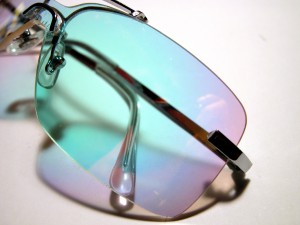
Hardev Grewal
CEO Plasmatreat PTNA & US - Hayward, CA

You may be familiar with UV rays primarily in the context of sunshine – which you’ve hopefully been enjoying plenty of this summer.
But UV rays also play a key role in the coatings of many popular plastics, including automotive headlight lenses, commercial eyewear, and consumer electronic devices.
UV-curable powder coatings are of particular interest because they offer many of the advantages of traditional thermoset powder coatings (easy to apply; can be reclaimed and then resprayed) with the speed and low-temp advantages offered by UV liquid. Regular thermoset powder generally requires temperatures too high – around 350-450°F – to coat plastics.
For these reasons, my writing partner Paul Mills likes to refer to UV-curable powder coatings, with their optimal combination of strengths, as the Reese’s Peanut Butter Cup of coatings!
While the UV curing process provides a number of great benefits – including improved durability and performance, enhanced appearance, and various process advantages – it can also increase the likelihood of adhesion failures. Since these coatings often contain little or no solvent, attaining adhesion is even more challenging.
Happily, as with so many other applications, plasma provides a solution to this problem.
In recent lab tests, we used a UV powder coating on standard test panels of various blends of polypropylene, ABS, polycarbonate, ABS/Polycarbonate, and Nylon blends. Plasma surface treatment was performed identically on each test panel at a line speed of 20 FPM using a Plasmatreat RD1004 rotating nozzle laboratory system, powered by a FG5001 power supply.
Following the plasma surface treatment, a thin conductive coating was spray-applied, followed by an acrylated polyester UV-curable powder coating that was electrostatically applied. The resulting film thickness was 50-60 microns.
The powder-coated test panels were then heated in a 230°F electric convection oven for 10 minutes, allowing the powder coating to melt and flow smoothly over the surface of the substrate. Finally, the powder was exposed to UV, which cured it almost instantaneously.
The results? The polypropylene, ABS and polycarbonate panels – which had no coating adhesion without surface treatment – showed very good adhesion following atmospheric plasma treatment. In three of the four cases, in other words, plasma treatment made the difference between an acceptable and unacceptable process.
While additional work remains, we’re very excited about these results. You can read the full article, co-written by Paul Mills and me, in the upcoming issue of Plastics Decorating magazine.
In the meantime, keep those sunglasses – UV-cured or otherwise – close by, and enjoy the summer!
Recommend






Write a comment